
Where We Be
| Changu Narayan Temple is just enough off the beaten path that not many tourists make it here |
| This mythical beast has a lion face, ram horns, and eagle wings |
| You're not Hindu! Don't even think of entering! |
| Robin looks relaxed and happy despite Garuda eating snakes just over her head (Garuda hates snakes) |
| Robin's a sucker for elephants with painted eyelashes |
| Changu Narayan is one of seven structures cited by UNESCO that make the Kathmandu Valley a World Heritage Site |
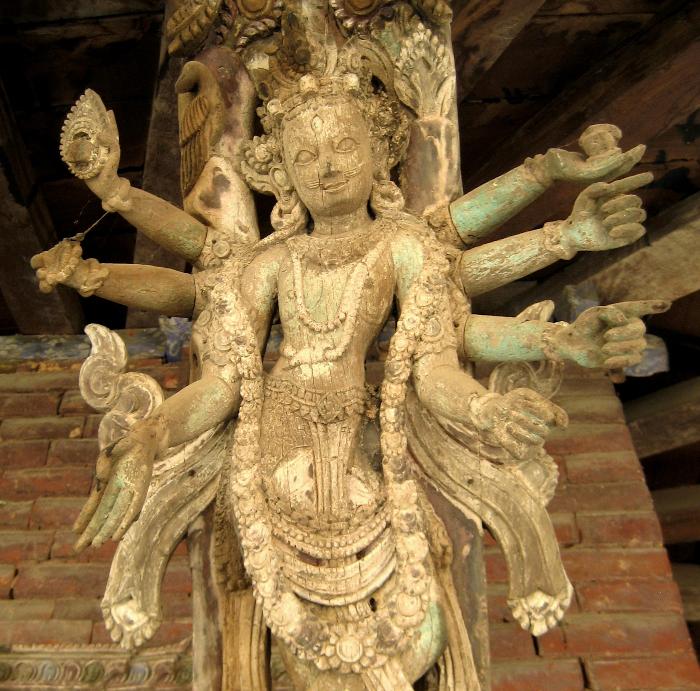
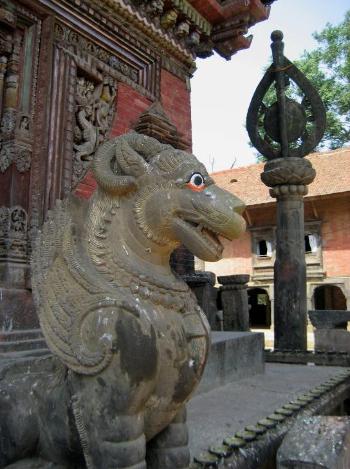
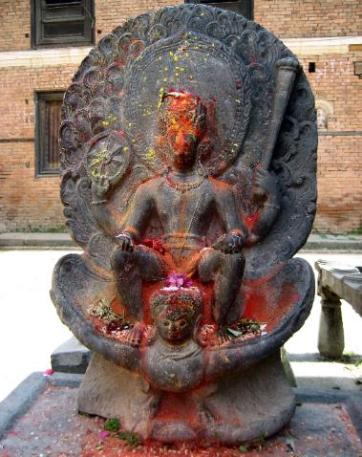
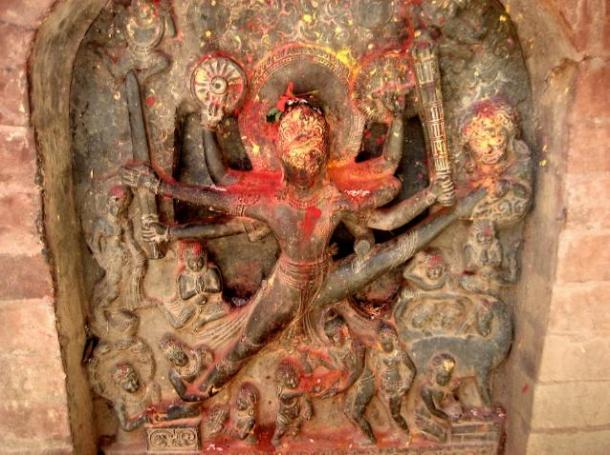
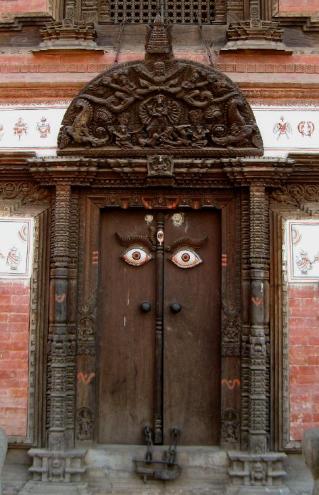
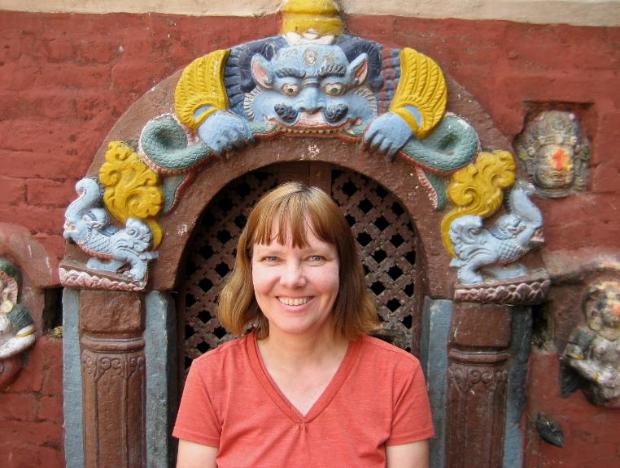
| This image of Vishnu astride winged Garuda is illustrated on the Nepali 10 rupee note (minus all the paint!) |
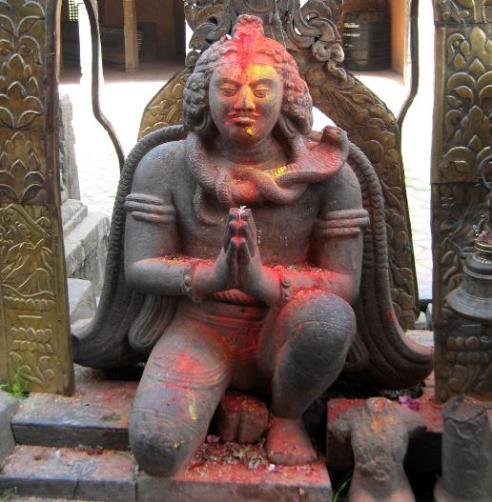
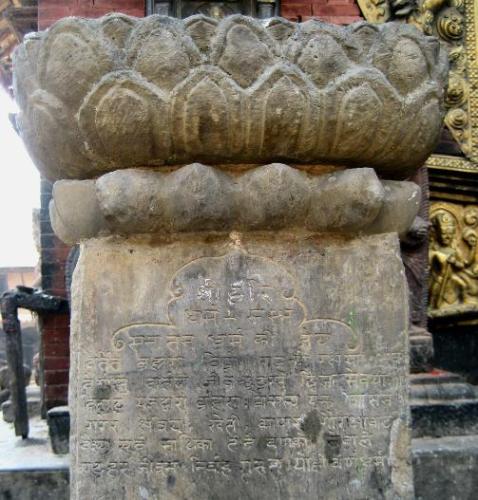
| This kneeling statue of Garuda dates from the 5th century AD |
| Oldest stone inscription in the Kathmandu Valley, dating from AD 464 |
| In this 7th century carving, Vishnu, disguised in dwarf form, asks his enemy King Bali if he can possess an area as far as he can stride in three steps. Bali shrugs, says why not? Vishnu becomes a giant and takes three enormous strides across the universe to defeat his enemy! |
| The facade of the temple is a feast for the eyes |
| HIndu gods are busy gods so all those hands come in handy! |
| Two stone lions guard the main entry to the temple. Inside, Hindus make offerings. |
| Three bulls pay obeisance to Shiva. (The first two look more like rabbits than bulls!) |
| The pace of life in the village of Changu Narayan is sedate even by dog standards |
| Changu Narayan Temple, Nepal |
Changu Narayan Temple is a Unesco World
Heritage site filled with ancient Hindu carvings
from the Licchavi Period (4th to 9th centuries).
Some of the oldest statues in Nepal are located
here at this temple 6 km north of Bhaktapur. A
kneeling statue of Garuda dates from the 5th
century and a stone pillar nearby is the oldest
stone inscription in the valley, dating from 464
AD. The lovely two-tiered temple is covered
with intricate wood carvings of multi-handed
gods and guarded on all sides by pairs of stone
creatures -- lions, elephants, griffons, sarabhas.
The temple is still very much in use today. We
saw Hindus making offerings and performing
devotions. Hinduism is a very tactile religion,
with devotees smearing red and saffron
pigment directly onto statues, tracing their
fingertips across temple walls, and ringing the
bell when they make an offering of food.
Around the courtyard are statues of Vishnu.
Our favorite is a 7th century statue of Vishnu
astride the winged human Garuda -- the same
image illustrated on the Nepali 10 rupee note.
Another favorite is Vishnu changing form from
a dwarf to a giant and taking three huge strides
across the universe to defeat his enemy.
Heritage site filled with ancient Hindu carvings
from the Licchavi Period (4th to 9th centuries).
Some of the oldest statues in Nepal are located
here at this temple 6 km north of Bhaktapur. A
kneeling statue of Garuda dates from the 5th
century and a stone pillar nearby is the oldest
stone inscription in the valley, dating from 464
AD. The lovely two-tiered temple is covered
with intricate wood carvings of multi-handed
gods and guarded on all sides by pairs of stone
creatures -- lions, elephants, griffons, sarabhas.
The temple is still very much in use today. We
saw Hindus making offerings and performing
devotions. Hinduism is a very tactile religion,
with devotees smearing red and saffron
pigment directly onto statues, tracing their
fingertips across temple walls, and ringing the
bell when they make an offering of food.
Around the courtyard are statues of Vishnu.
Our favorite is a 7th century statue of Vishnu
astride the winged human Garuda -- the same
image illustrated on the Nepali 10 rupee note.
Another favorite is Vishnu changing form from
a dwarf to a giant and taking three huge strides
across the universe to defeat his enemy.
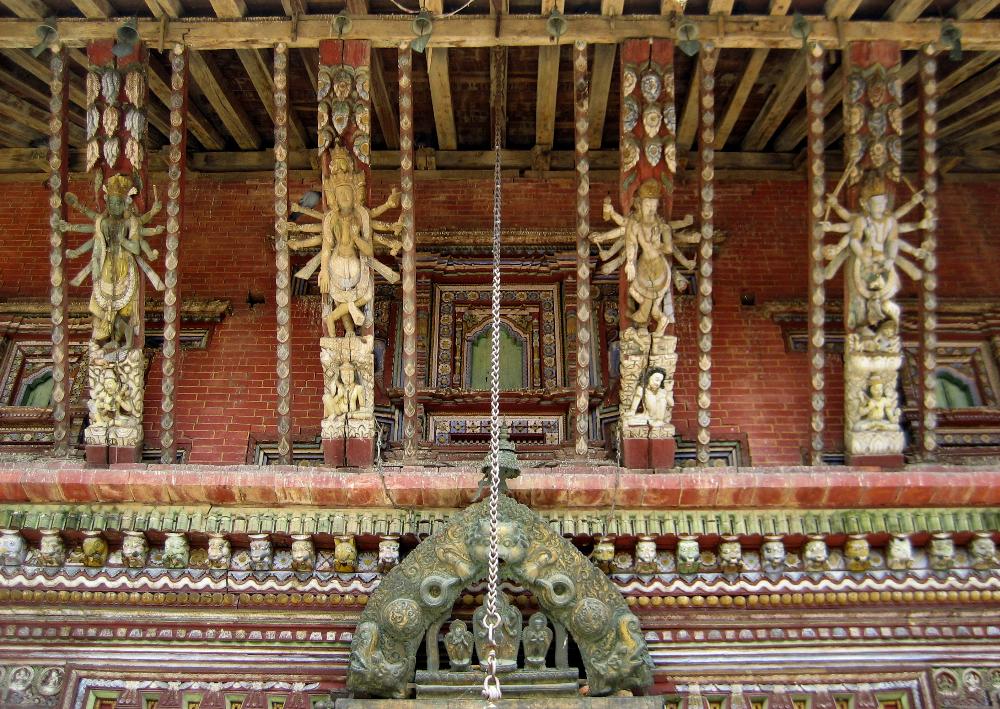
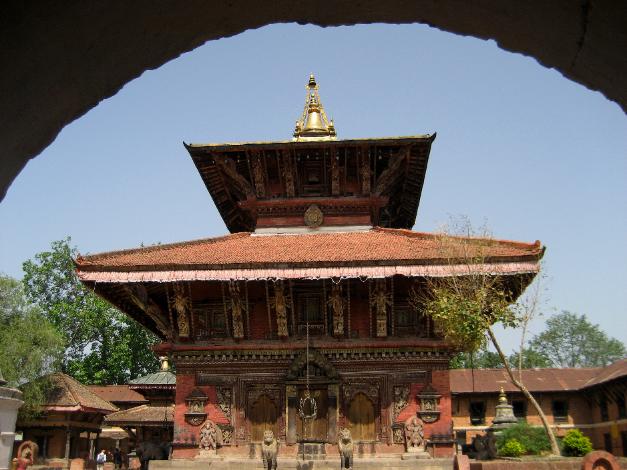
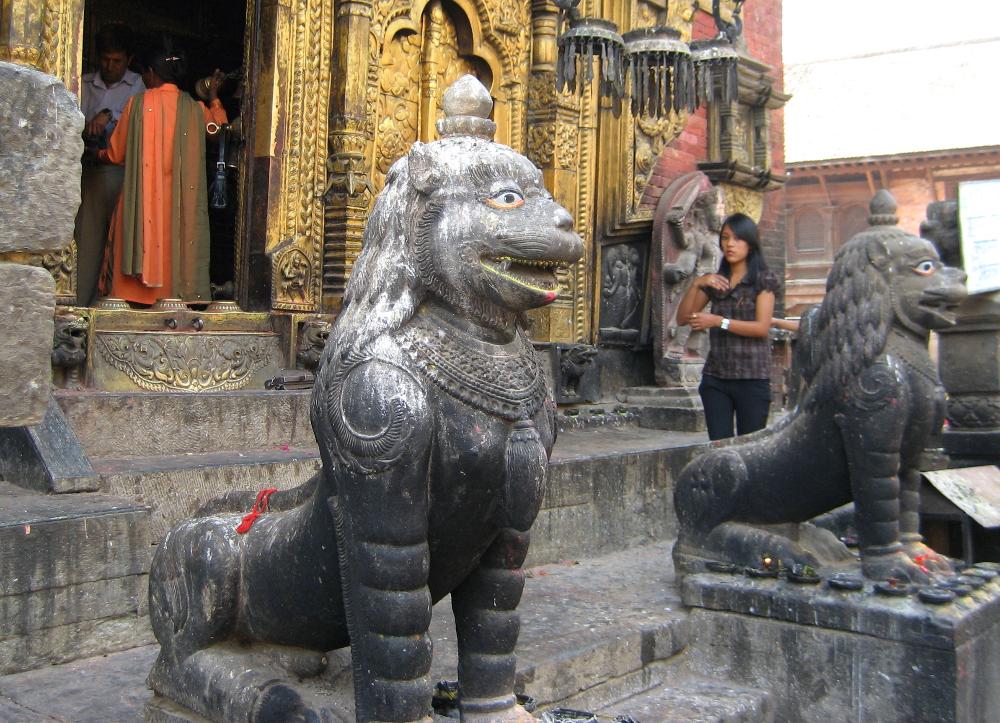
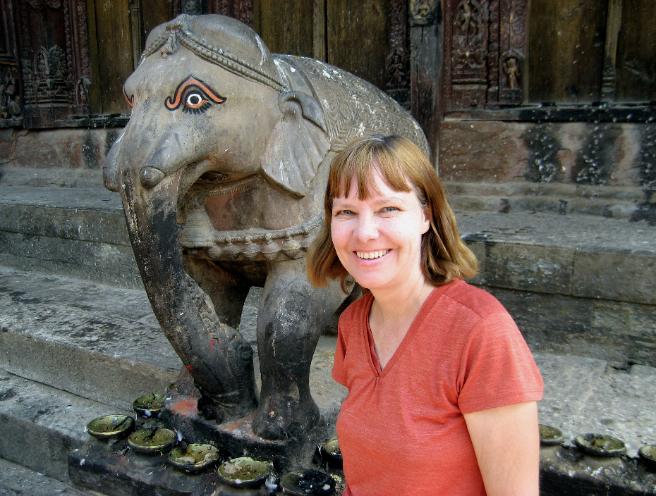
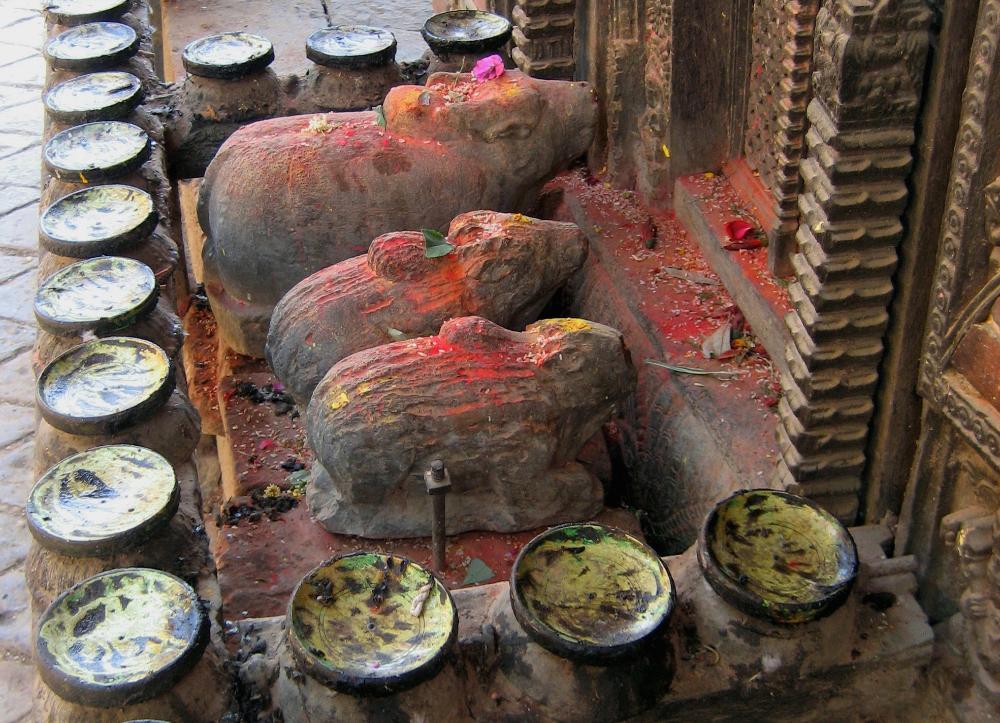
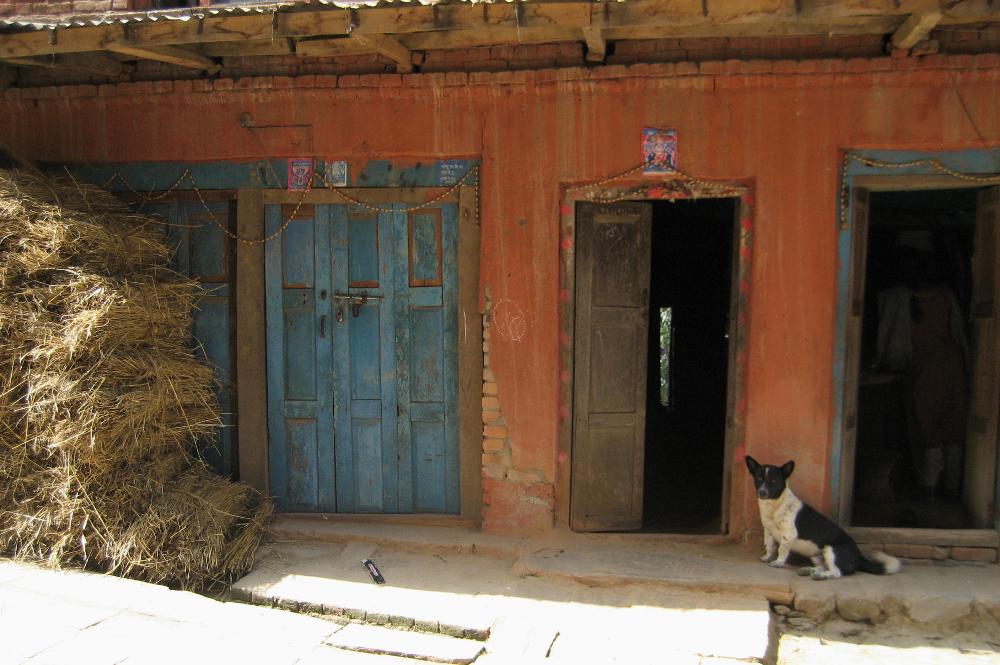
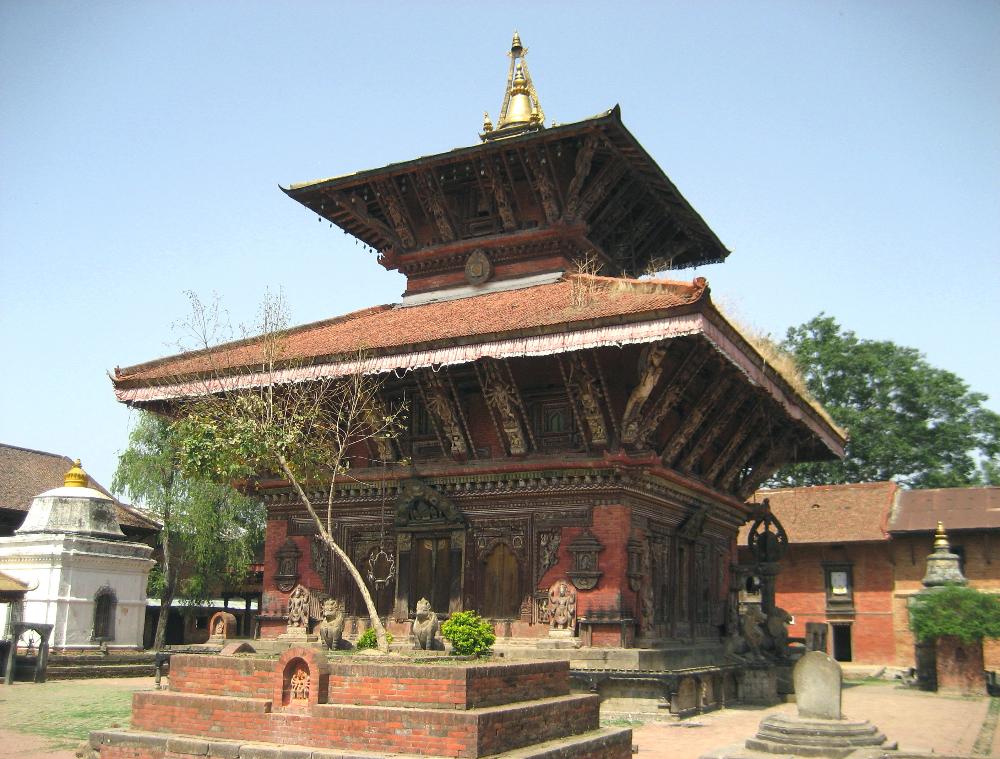
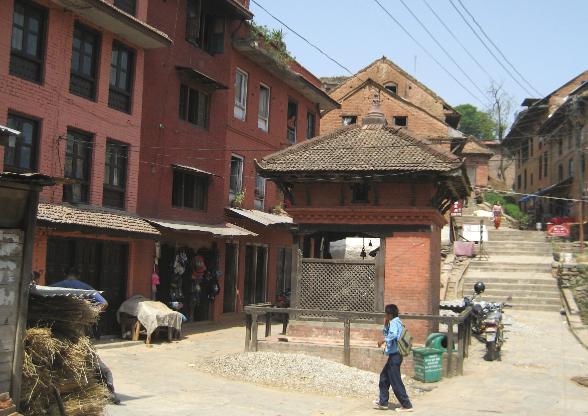

| It's only half an hour by local bus from Bhaktapur, and you'll get a great taste of Nepali village life |